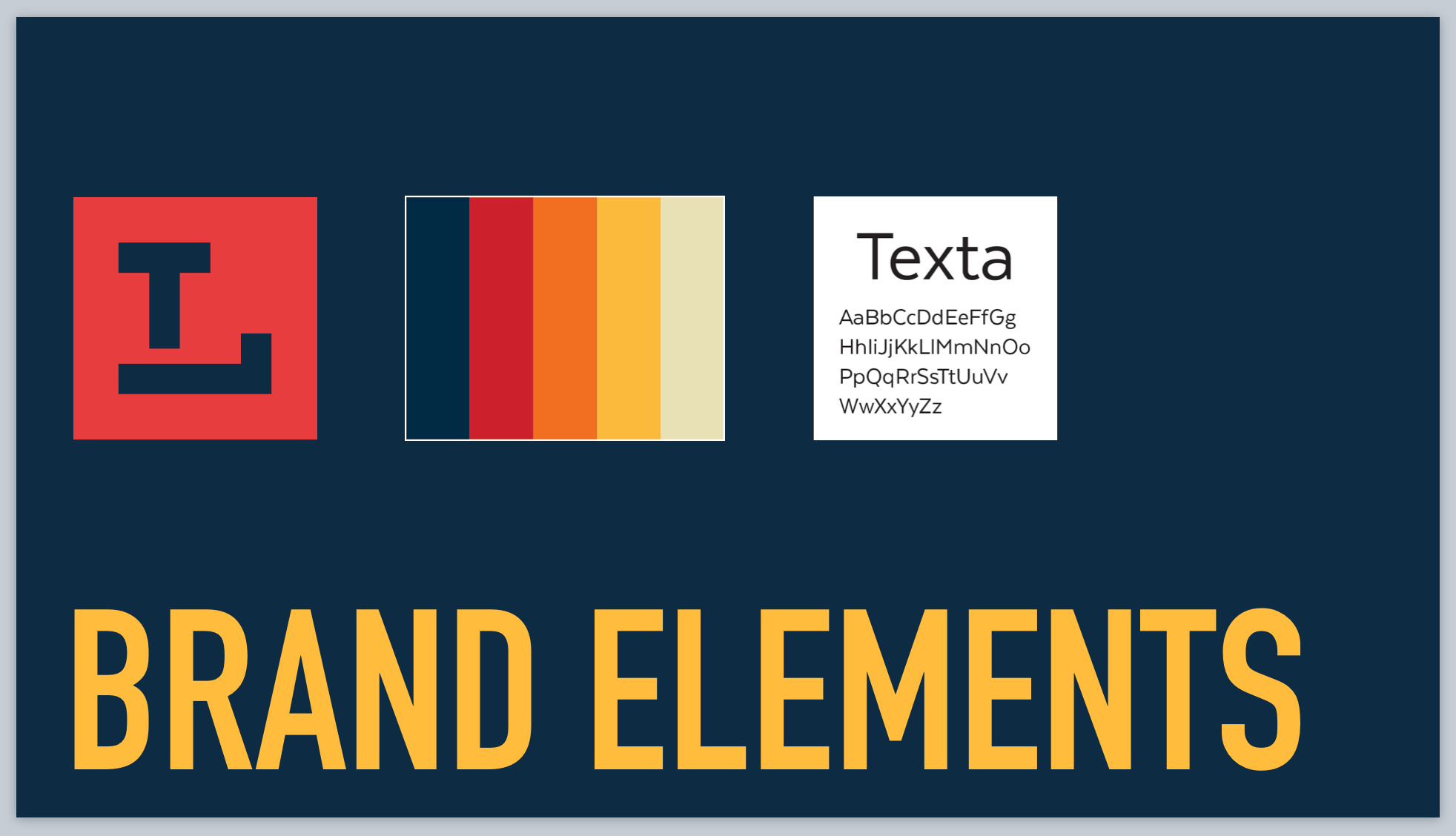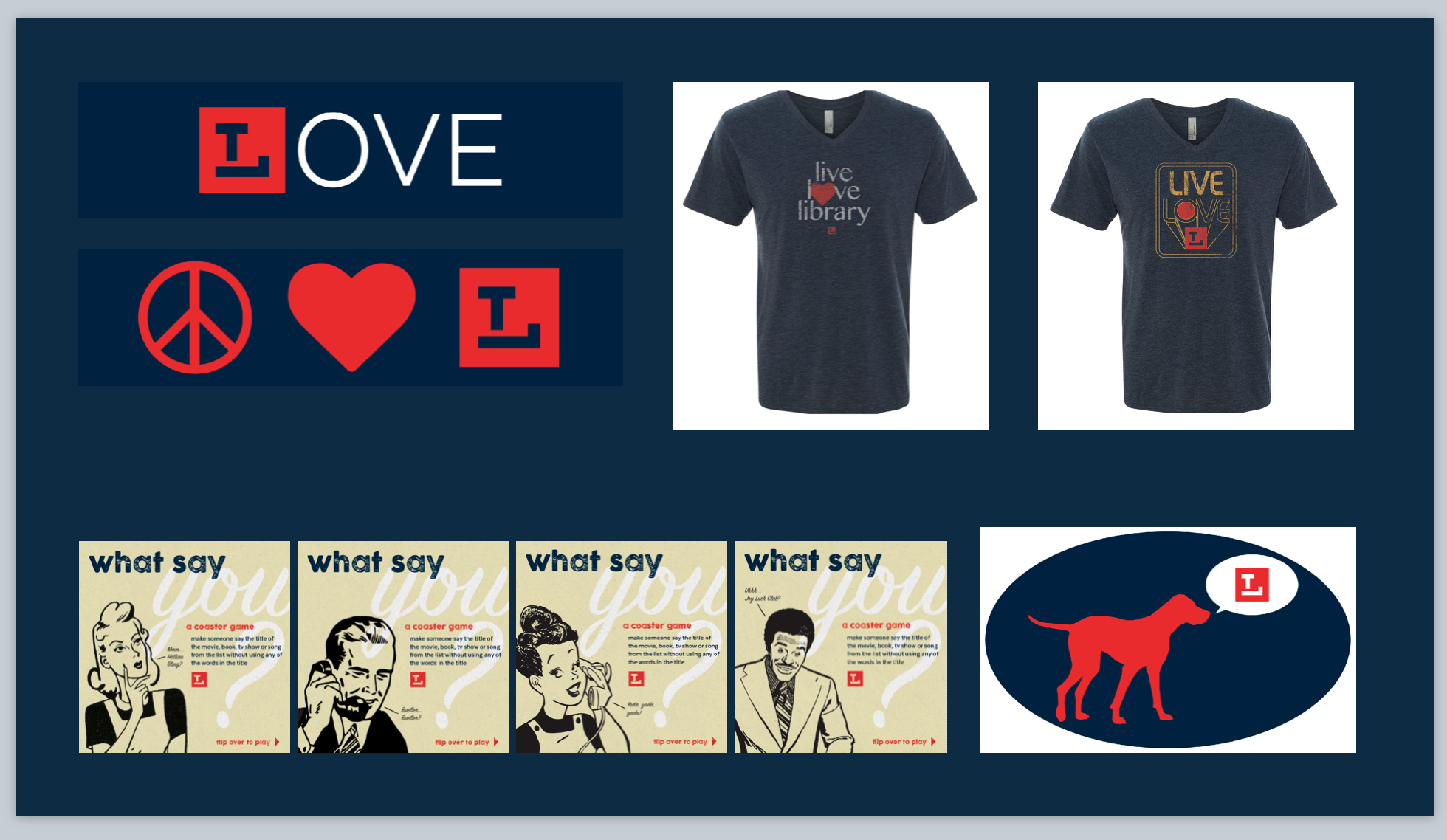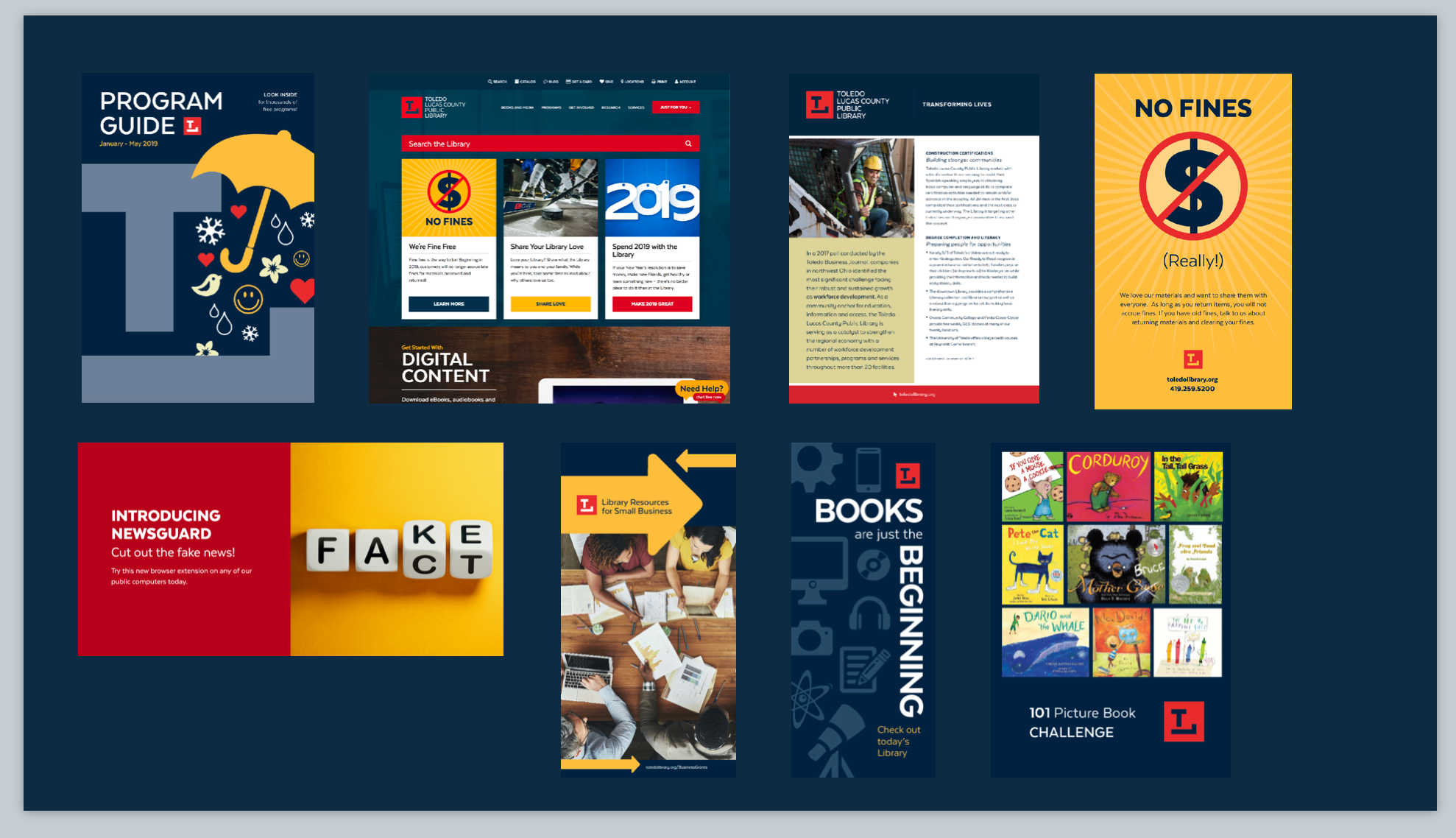Welcome to episode 010 of Library Figures. In each episode, we interview a new guest and hear about one of their favorite marketing strategies. In this episode, Terri Carroll of Toledo Lucas County Public Library will be sharing about the systems and process her marketing team uses to manage projects and promotions for the library system. She talks about how they stay on brand, delegate tasks and stay on track, and how they are able to produce more marketing materials with less staff and no comp time. If your library’s marketing team could use some organization and a productivity boost, this is the episode for you!
“We’re all doing this work for impact and to amplify the voices of our organizations.”
-Terri Carroll
Key Takeaways:
- How to implement new systems and processes for your team
- Staying on brand by centralizing the designs
- Streamlining the promotion process with deadlines
- Project management systems as an investment to save time and manpower
- Producing more content with less resources
Key Links Mentioned in This Episode:
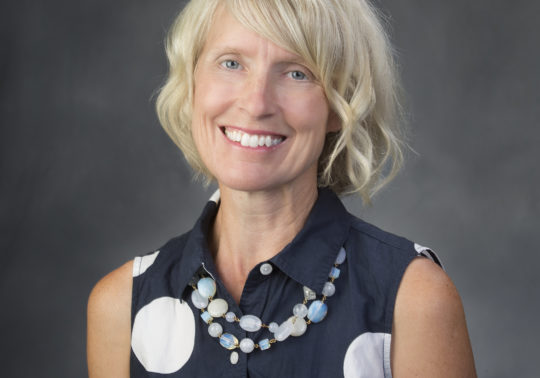
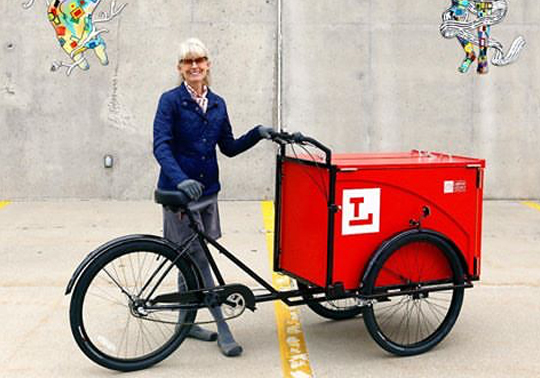
Read the Episode Below
[00:00:00] Tyler Byrd:
Hey everyone, before we jump into this week’s episode, I wanted to share with you something cool that our team is doing. So next month in April it’s going to be ALA’s national library card…or excuse me, National Library Month. Library Card Month, that’s in September, I know that. So, one of the things that we wanted to do, though, as a team was we wanted to create a couple marketing campaigns and be able to provide all the graphics around that to help you promote for the month, and so we’ve put together some files that we’re going to be having on the website. If you head over to meetpiola.com, you’ll be able to download those. We’re going to give you all the source files. So there’s two different campaigns. Each campaign will have a little bit of a different approach, but it’s going to have a number of different marketing assets available for you that you can download at no cost, just to help you promote next month for what you’re doing and for what libraries do for our country in general. So check it out. Head over to meetpiola.com, M-E-E-T-P-I-O-L-A.com. Thanks.
[00:01:03] Tyler Byrd:
Brought to you by Piola, the very first patron-inspired digital library branch. I’m your host, Tyler Byrd, and this is Library Figures. It’s a show about the people, data, and strategies behind some of the top-performing marketing campaigns in the library industry and how they’re driving community engagement like we’ve never seen before.
[00:01:27] Tyler Byrd:
So Terri, thanks for joining me today on the show. You have something a little bit different than what we’ve talked about the past, so I’m excited to jump into that and let our guests hear what you’ve been up to and why I think it’s going to be so important for them to hear this episode. But before we get there, could you do me a favor and just introduce yourself for those members and our listeners that don’t know who you are yet?
[00:01:49] Terri Carroll:
Absolutely, and thank you for including me in this podcast, Tyler. I’ve really enjoyed learning more about the industry. I’m actually fairly new to library marketing. My name is Terri Carroll. I’ve been at the Toledo Lucas County Public Library for just about a year and three months. Before that I worked in marketing in the higher education sector for about 10 years. And Toledo Lucas County Public Library, we have 20 locations. We saw more than three million visitors last year and circulated 5.2 million materials.
[00:02:27] Tyler Byrd:
Wow, nice. So you’ve been there for about a year so far?
[00:02:31] Terri Carroll:
Just over a year, yes.
[00:02:32] Tyler Byrd:
Perfect. Background before that; what were a couple of the places that you worked previously?
[00:02:39] Terri Carroll:
I was a senior director of marketing and communications at Bowling Green State University for about eight years, and we had an internal marketing team that operated effectively as an internal advertising agency for the university managing all the admissions marketing and fundraising. And prior to that I was a freelance writer in the higher education field and I worked with the Ohio State University, Ohio University, and then some smaller privates.
[00:03:11] Tyler Byrd:
So today we’re not talking marketing, we’re talking about processes and project management as it relates to, essentially, marketing. Can you kind of give us an intro into how you’ve brought that into the library over there and what you’re doing right now?
[00:03:25] Terri Carroll:
Absolutely. So, my focus since I’ve started at the library is really trying to streamline our systems because, as all of us know in this field, we’re in a really competitive marketplace. And to institute all the great ideas we have individually, and the great ideas we hear on podcasts such as yours or reading newsletters, to open up any bandwidth to try new ideas you need to have good systems in place, and so often it seems like those of us in the creative field can kind of buck against systems a little bit, they make us feel a little constrained, but I actually have a completely different philosophy there. I think if you can get all of your back-of-the-house functions working well, then you really can open up some capacity for that work that is rewarding, it’s fun, and most importantly effective in reaching your customers. And with my higher education background, it is very similar to libraries in that we always had resource constraints, so you had to be really smart about where you spent your time, what projects your staff worked on, and trying to find the ways to keep what I guess I would call Marketing 101 to make the work you just absolutely have to do as efficient as possible so you have some capacity, again, for that more creative work.
And the two areas that I started focusing on here at our library were, first, really instituting strong brand management. Before I started, happily, the library had already gone through a new brand identity exercise and had great components in place and had done the research, had a great style guide, an updated logo. And really the main implementation of all that work was the use of the colors on the website, which was great, and the new logo appearing on most pieces. But that’s where it stopped. The creative team like so many creative teams really was still approaching every project as its own unique piece. So in a brand management system you aren’t always asking yourself, how do I make this piece unique? How do I make this bookmark about tech tools look different than this bookmark about job search? And working within brand management the answer is, they shouldn’t look different. They really should all look like they’re in the same family, and that is for the benefit of our customers. We in our individual organizations, especially if you are in the marketing department, you see all the materials and they might seem to blend together to you, but that’s when I tell people branding is starting to work because our customers only see a sliver of that, and what we want is, as soon as they see something, I want people in our community, as soon as they see the blue, red, yellow in the Texta font with bold graphics and a few words, I want them to say, “Oh my gosh, there’s another great thing from the library,” immediately, before they do anything else. So that kind of revelation was really impactful across our system. And by taking all of that work away from making each piece unique it opens up a lot of bandwidth for the small creative team that we have, and like so many of us have in libraries.
Toledo Lucas County Public Library: Brand Guide & Branding Elements
[00:07:07] Tyler Byrd:
I know exactly what you’re talking about. When you’re in a creative space and you have designers and copywriters and those people that love to be creative and they have to work in that brand guide, they’re always trying to force outside of that, right, like, “I want to do something a little different. I’m tired of working in the same colors of fonts or layouts.” But it’s so crucial. You look at something like Amazon and it’s down to the packaging, right. Their boxes show up with the little smile which is part of their brand. It’s engrained across the board, and so it’s one of those reasons that Amazon is so well known. I think you can look across the board at Nike and so many other brands, they’re very, very good at that. Or the brands that are good that that, you recognize them immediately. I feel like libraries are definitely a little behind the trend or the ball on that because we represent everyone else but ourselves sometimes.
[00:07:56] Terri Carroll:
Right.
[00:07:57] Tyler Byrd:
Right. So I think that’s a really cool piece to have. How do you enforce that, though? Do you have tools internally? What’s that process for ensuring that everything is within the brand? Well, everything your team creates.
Previous Branding Elements
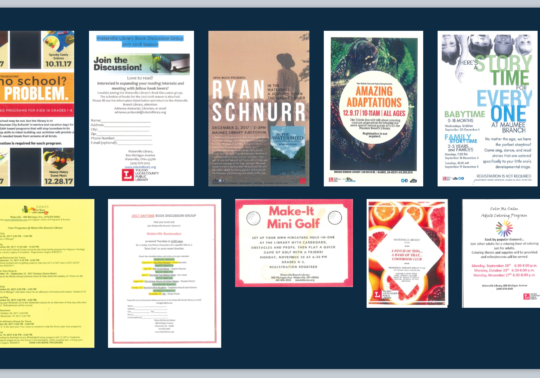
Previous Branding Elements
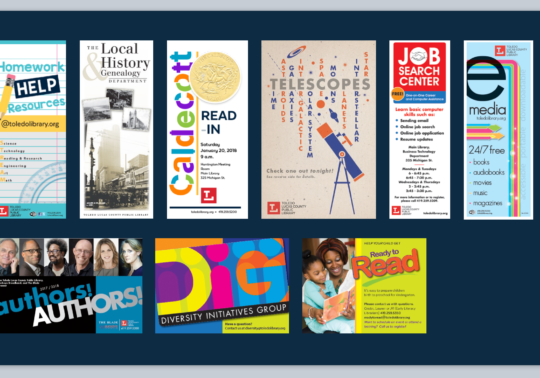
[00:08:13] Terri Carroll:
Well, there are a few ways. So first of all, what I’d like to address is pushing back a little bit on the creative part because what this team found is when…because frankly, after producing 500 different bookmarks, even if you’re approaching each one individually, it still feels like you’re producing 500 bookmarks. So by taking away some of which colors to use, what font to use, what kind of headline, by streamlining that part of it what this team has found is we can actually think about what the piece is doing, and questioning it — why are we doing a promo card for this? Does that really make sense? Should we be doing something else? If we do decide it’s the right piece, what is the messaging? Are we really giving people the information they need to make a good decision about working with a library? So empowering the creative team to think about what we’re doing and why we’re doing it, and then really respectfully then working back with our colleagues to have those discussions is really a different kind of creativity and one that this team has embraced.
[00:09:26] Tyler Byrd:
So do you have a brand guide then that they work within, or?
[00:09:30] Terri Carroll:
We do. We have brand guidelines, but it’s very simple, it’s only four or five pages. And we have six colors, one font, some guidelines on how much white space we should have.
[00:09:43] Tyler Byrd:
Do you have anyone that double checks it to make sure that it’s in line with the brand, or the team is just, you’re good to go, we trust that you’re going to get it done and stay within the guidelines?
[00:09:52] Terri Carroll:
So all of the work is done internally in the marketing department. So the quality check there are the two individual designers and our digital content coordinator, and then me. So I see all the work they do, but I have to say that most of the time, if we’re doing any revisions it’s not for brand noncompliance, it’s really addressing that function of the piece more often than not. And by moving into this strong brand management where we can really tackle work a lot more quickly, that gave us the capacity to make that very tough decision that I see on our message boards in other conversations in libraries; how do you keep branches compliant with the brand? And our solution is the branches don’t produce their own materials.
[00:10:46] Tyler Byrd:
Ah, nice.
[00:10:48] Terri Carroll:
Ah, because we have the capacity to do that. Because when marketing was really busy individually producing all of those pieces, out of necessity branches started doing their own work, and then we all know what that looks like.
[00:11:04] Tyler Byrd:
Yeah. So beforehand, we had talked about this a little bit and I think you have a good process for requirements around managing that. So can you walk us through, if a branch needs something, what’s that look like today?
[00:11:17] Terri Carroll:
So, what it looks like today is, if there’s a special request for something, we do not have a systemwide project management tool or request form. I quite simply ask people to email me, “Hi Terri, we’re doing this special vegan cooking class the first Tuesday of every month in the summer. Could you help us with promotions?” And in that case that’s actually a really exciting program because there’s such an interest in healthy cooking and locally sourced food. So in the past perhaps branches would’ve asked for a poster or a promo card, but now what we do is we talk about what programs people are excited about and then decide, actually, this is really great, we’d like to write a media release. We will give you a poster for your brand, but we’re also going to share on social media. So we have a conversation about which channels make the most sense instead of just order fillers for things.
But way before that, one of the other systems we work in… So, we have kind of a three-legged stool, the first being brand management, the second piece of that is our program management system that is library wide, and we use, the brand name is Communico. So all of the staff that manage programs have deadlines for entering all their programs. So, for example, this week was the deadline for putting in all your programs for summer, so that vegan cooking is going to be in this Communico system.
[00:12:57] Tyler Byrd:
What happens if they don’t get it in?
[00:12:59] Terri Carroll:
And that does happen and that’s when we have those special phone calls and then we just make an exception and produce what’s needed to support the program, if I think it’s worthwhile. Sometimes the answer is a “no, but.” But what we’re really working — and it’s not just me, it’s the branch services managers, the adult services coordinator, the youth services coordinator — we’re really working with staff across the system to get as many programs as possible into that program guide, or into Communico, because once the programs are there that kicks off a whole series of kind of automatic promotions. We produce a seasonal program guide that’s anywhere from 60 to 80 pages, and it’s a beautiful piece. It’s six-by-nine uncoated stock, it’s organized by branch. So if you are compliant in Communico, all of your branch’s programs are going to be in your section of that guide, without you doing any extra work. The programs also will show up on a 20-by-24 calendar that we produce for each location for every month of the year, and it will also populate our online calendar. And on our website we’ll develop special pages. Going back to that vegan cooking, maybe we’ll do Cooking at Your Library this summer as a vanity page, like toledolibrary.org/cooking. And if your program is tagged with cooking, it will automatically populate that page. And so if we do a poster and we put that vanity address, then all the cooking programs will be there.
[00:14:46] Tyler Byrd:
So your first step is essentially you’ve asked them to stop doing design. The second one is that you’ve given them a deadline and asked them to enter all of their content into Communico so that it’s available far enough in advance that your team can do the design and the promotion and plan that marketing calendar out. So once you have that information in the system and you’re setting up and you’re looking at putting it into all of these resources, how do you manage that process internally with your graphic design team and your marketing team?
[00:15:14] Terri Carroll:
So that’s the third leg of the stool. What a perfect segue you gave me, Tyler. So we are using a really robust project management system called Wrike, that’s W-R-I-K-E. And it’s a system I did use at my previous job and, happily, it’s a system that works really well for this organization. And Wrike is a digital equivalent of almost like using folders. So if you think of, let’s say, across the system we have a hundred projects or initiatives that we’re really excited about this upcoming season in the summer, in Wrike I can have a folder for each one of those. So of course a folder all of us probably have is Summer Read, and then maybe another folder is Vegan Cooking. Another is Opening of Our New Central City Branch. So we have an electronic folder for each of those projects or initiatives, and then within that we open a task for every marketing channel that we want to utilize. So for a branch opening we’re going to have invitations to the event, posters showing the floor plans, press release, social media, digital signage, a vanity webpage. So each of those separate elements get their own task within the folder, and then they get assigned to the appropriate person on our staff. And then each person has a dashboard that they can see all the projects that are assigned to them and they can view them by due date, they can view them by project. If they want to see everything for Summer Read that is theirs, they can sort that way. Most everybody uses a dashboard that’s by due date to make sure they’re not falling behind on anything. And as a manager I can see everything by project, by channel, or by staff member.
[00:17:26] Tyler Byrd:
So you know where everything’s at, too. That’s nice.
Hey all, I wanted to share with you real fast about a webinar that we’ll be putting on the third Thursday of this month. For any of you out there that are struggling with your library’s current website, we’re putting together a webinar that’s going to cover some of the best tips and tricks that you can implement on your side that help with too much content or poor content organization, ADA accessibility and how to help people with disabilities use your website effectively, general design tips for how to improve the user experience and the user flow, and really, overall, how to make your website something that’s a little bit more patron-first and patron-centric. We want to give them the best experience possible, and we really want them to have something where they feel like it is the same experience they’d get if they came into a physical branch because, at the end of the day, your website is really just your digital library branch and it’s important that for those patrons that are using digital services through your library, that they really are getting the best experience possible.
So again, if you’re interested, head on over to meetpiola.com/webinar. That’s meetpiola.com/webinar. You’ll find the newest webinar series that we’re putting together, and I think it’s going to be a really big help for any of you out there that are looking to improve just a little bit that user experience online. Alright, let’s head back to our interview. Thanks.
[00:18:55] Tyler Byrd:
When did you implement that?
[00:18:57] Terri Carroll:
That was one of the first things that I implemented when I started in this position. Previously, the library and this team used a system that I see other libraries using called Asana which I think has a little bit better price point, but it’s not nearly as robust. It doesn’t have all the ways to track all the different channels and to see what each person is doing. And it had been implemented mostly by one person, so it was an electronic system but still one person was kind of physically managing everything. When we onboarded Wrike, even though I was very familiar with the system from my past job, the whole team went through all the training and onboarding and we set up the system together because it’s very customizable. So we all worked on it together so everyone understood how it worked, and why it was working, and how to change it. It’s tough to change something that you didn’t build yourself, but since everybody was involved as we thought of refinements, everyone was really comfortable asking about those and then implementing them.
[00:20:07] Tyler Byrd:
I like that because I’ve seen this so many times with organizations that they try to implement a project management system, but then the team doesn’t actually engage and use it, and so it really becomes a huge waste. So your process for onboarding the team and getting them engaged early as you roll that out really seems to me like it gets better buy-in, probably, than just giving it to them and asking them to use it. Would you agree? Did you kind of see that, or?
[00:20:34] Terri Carroll:
Absolutely. And as someone who’s been at the receiving end of all kinds of systems that were purchased or implemented and then given to me, it was really refreshing to flip that because, just thinking about how I like to work, it’s a lot more meaningful to build something from the ground up when you have the opportunity. And for this team, I’m fortunate to have stepped into a system with a team that had been working together for quite some time, and I really wanted to be respectful of their understanding and their knowledge and address concerns that they might have because, as we all know, it can be tough when you have a leadership change, when you have a new boss. So it also was an opportunity to lay the groundwork for how I wanted the team to work together.
[00:21:25] Tyler Byrd:
Got it. When you are looking at this, I know the kind of impact a good project management system can have, but have you looked at that and thought about, what are we doing differently and what’s the impact this has had on our organization? Do you have any details behind that that you could share?
[00:21:41] Terri Carroll:
Yes. For the creative team itself, themselves rather, for everyone to know what their workload is on a daily or weekly or seasonal basis is such a relief. There’s not really a way to measure that. Moving from a reactive workflow to a strategic workflow has just been a sea change. As we talk collectively as a group and when I meet with people at their weekly one-on-one meetings with me, it just makes people feel more control over their workday. We still, of course, because we’re in communications have unexpected things pop up, but they’re not the end of the world. It’s like, oh, we have something to manage today that we didn’t expect, a media opportunity or some breaking news, but we manage it and then go back to the other things we expected for the day. So for the climate of the marketing team that has been really a dramatic change. For our colleagues across the system, they just know that now they get the work that they had always hoped for from the team, because they knew that there was great creative staff here at the library, but there was always a disconnect about trying to produce all the work they needed to produce for the size team there is. And now people really know that when marketing says, “We’ll have these monthly calendars out to you,” they will be there and that there will be a program guide delivered on time. So they see kind of the calmer, strategic workflow and that builds a lot of trust.
[00:23:27] Tyler Byrd:
Yeah, that’s nice. What about as far as being able to get more things through your team and produce more marketing? Has it had any impact on that?
[00:23:36] Terri Carroll:
It has, it has. So I think, going back to one of my original comments, it’s always a work in progress, but finding a way to manage what I would call Marketing 101, the things we have to do — the program guides, the calendars, the daily social media posts, maintaining the website, maintaining our interior and exterior digital signs — is so much work, but my biggest fear is that we can do all of that work and our numbers will continue to have this gradual decline that you’ve talked about on your show. As door counts slip a little bit, circulation slips a little bit. I don’t want to spend all of our time running on the gerbil wheel of Marketing 101 because then we’re never going to get that increased awareness and attendance that we need in all of our spaces. So by paying really close attention to all of these systems we’ve opened up capacity to try some more creative and brand-building activities.
So we’ve had a lot of fun with this. We did a really fun video campaign called Libraries are Boring. We’ve launched a whole bumper sticker series and decals and created a coaster game. And we’ve partnered with a local screen printer that has a really loyal following to do t-shirts, and launched a page called Library Love where people can type in the reasons why they love the library. So finding other ways to amplify our message has been the reason why I’m investing and having the team invest so much energy into these other systems, just to open up some capacity, because we’re not going to get more people, any of us probably, we’re not going to get more resources, so how do we do more with the same or even in some cases declining resources?
[00:25:43] Tyler Byrd:
So instead of doing your entire workday where you’re just working on event posters and bookmarks, you’ve been able to actually take that and get it done quick enough that you have time to do these more fun, creative projects in addition. Are you doing that with the same team size, then?
[00:26:03] Terri Carroll:
Actually, I’m glad you asked. We are doing this with one less team member than the department had. So Wrike is about $5,000 a year for 10 users, so that’s what we’re investing. And the team has one less graphic designer than they had before I started, so we’re down one FTE [full time employee]. The team had a lot of what this system calls return time. They don’t really do overtime, but they do return time, so if you work a 10-hour day then the library owes you those 2 hours. Those were coming in at about a hundred hours annually, and we’ve eliminated those.
[00:26:49] Tyler Byrd:
Whoa, okay. Let me jump in here. So you went from, you went down by one team member, and then you went down from having a hundred hours a year in kind of comp time to having no comp time as well.
[00:27:02] Terri Carroll:
Right.
[00:27:03] Tyler Byrd:
And all of that savings in man hours or person work hours you would say is coming from the efficiencies you’re getting from the processes and the project management tool?
[00:27:14] Terri Carroll:
I would. From working within brand management, working within Wrike, and then working across the system with Communico, which remains in process.
[00:27:26] Tyler Byrd:
I love that because it goes back to what you were saying earlier which is that you’re not going to get any new FTEs. It’s really hard, usually, to add people to you department and get more staff time. And so if you can make better use of the staff time you have, and especially if you can use that better just to have more fun with marketing and do some crazier ideas, you’re going to have a bigger impact in the long run.
[00:27:48] Terri Carroll:
And that’s what we all want, right. We’re all doing this work for impact and to amplify the voices of our organizations.
[00:27:56] Tyler Byrd:
That’s exactly it. That’s awesome, that’s awesome. All right, so we’re coming kind of towards the end here, but before we go I wanted to jump in and ask you a couple of these rapid-fire questions that we ask everyone for fun.
[00:28:09] Terri Carroll:
Okay.
[00:28:09] Tyler Byrd:
Alright, you ready?
[00:28:10] Terri Carroll:
Mm-hmm.
[00:28:11] Tyler Byrd:
See, you have an advantage no one else has had because you actually had an opportunity to listen to some podcasts before, and so maybe you’ve heard some of these, but it’ll be different. So what’s your favorite source for staying up to date on new marketing ideas?
[00:28:25] Terri Carroll:
I like to look at segments outside of the library. So I like to see what successful retailers are doing, so one of my mottos is, if Target does it then maybe we should be doing it too because they’re super successful. So I like seeing what retailers are doing, and I like to see what other organizations that are in the public eye are doing, like leading museums or science centers or botanical gardens. So I like to get outside. Although I love Toledo, I’m a Toledo girl, I love to get outside of our community and see what’s happening in other cities and then bring those ideas back to see how they can help the library.
[00:29:08] Tyler Byrd:
I think that’s an awesome answer. It’s so important to look at other people in other spaces if you really want to get outside the box and do really well, so thank you for that answer, that’s great. How about a book you want to read but you haven’t read yet?
[00:29:21] Terri Carroll:
Well, I’m currently reading Adam Grant’s Non-Conformists. How non-conformists can change your organization, because here in marketing we are asking tough questions across the system. So I’m enjoying reading the book to see how cultivating the kind of culture can really help organizations grow.
[00:29:45] Tyler Byrd:
Nice. Okay, I’ll have to check it out. I haven’t heard about that one yet, but it sounds good. How about digital or print?
[00:29:52] Terri Carroll:
I don’t think I’m going to say I prefer either. I think our challenge in our field is finding out how people like to get their information. And since libraries serve all demographics, all age groups, I think that’s one of the challenges, is it’s pretty tough to give up and say we’re going to concentrate on print, or we’re going to concentrate all on digital. I think what’s important is to get out in the field. My whole team, we’re going to be doing some infield surveys through March and April and one of the questions we’re going to ask library customers is how they get their information, how do they like to get their information, does our website work for them, do they like our print materials. So I think, again, that balancing act of “what can we do with the resources we have” has to be answered by what customers and noncustomers would like to see.
[00:30:48] Tyler Byrd:
Nice. Do you have a favorite library service?
[00:30:51] Terri Carroll:
My favorite library service is books. I still check out lots of books myself, and so do a lot of our customers. And we’re actually being really intentional while we talk about all the other things the library does to not forget that we have a really loyal following of people who like to check out both our traditional books as well as digital.
[00:31:16] Tyler Byrd:
Alright, nice. Alright, Terri, thank you so much for joining us today. I appreciate it and I think the information you shared is really helpful. To all of our listeners, if you’re interested in any of those links that were mentioned or the software that were mentioned, check out the show notes or head over to the Piola blog. We’ll be listing everything there so you can go directly to the site and find that resource. Terri, last question for you. If one of our listeners wants to reach out and learn more about the project management tool or your processes and operations, how can they get ahold of you?
[00:31:48] Terri Carroll:
I think the easiest way is by email. I keep a really low social media profile. So my email is Terri, T-E-R-R-I, dot Carroll at Toledo Library dot org.
[00:32:01] Tyler Byrd:
Alright, and we’ll put that in the show notes too. Perfect. Well Terri, thank you so much and I appreciate you joining us today.
[00:32:08] Terri Carroll:
Hey, well thanks for producing this great show. What I really like about being in the library world instead of higher education is how collaborative it is, so it’s great to learn from everyone.
[00:32:17] Tyler Byrd:
It is awesome. It is awesome. I love how everyone gets together and shares, so it’s definitely cool. But thank you very much, I appreciate that.
[00:32:23] Terri Carroll:
Thank you, Tyler. Take care.
[00:32:27] Tyler Byrd:
Alright, before we head out just a couple more quick things. If you know somebody that you think would be a great guest on this podcast and you’d like to hear us interview them, I’d love the opportunity. Send me their name and their contact information at hello@meetpiola.com, that’s hello@meetpiola.com, and I’ll do all the hard work of reaching out and getting them scheduled so that all of our listeners will have the opportunity to learn more from them about the great marketing strategies that they might be using. We’re constantly looking for new guests and great guests on the show and I would really appreciate the opportunity to meet with your connections and get them up here to learn more. Second, if you’re enjoying the podcast episodes and so far you like what you hear on Library Figures and the content, head over to iTunes. You can subscribe to the podcast to get future episodes, and while you’re there, if you could give us a five-star rating that’d go a long way in letting us know that you like the content and you like the show and we should continue doing it.
Alright. Until next time all, I look forward to being on air again and the next great interview we’ll have up. Take care. We’ll see you next time.
[Music]




